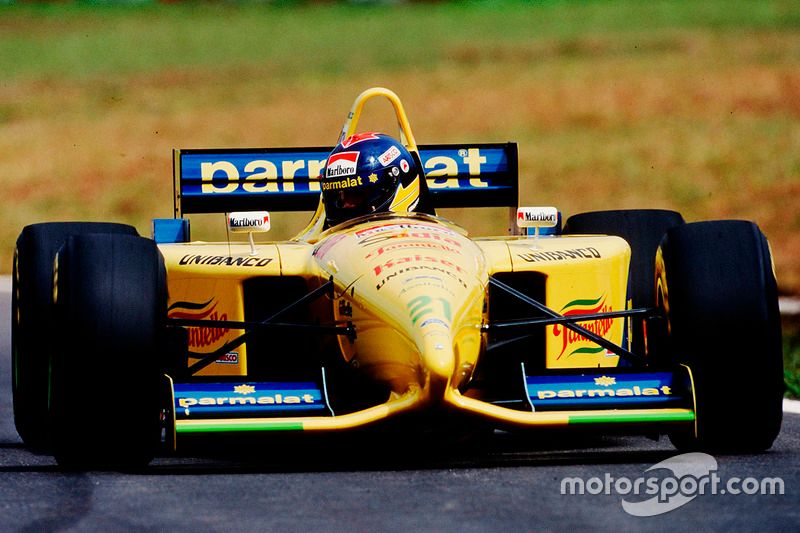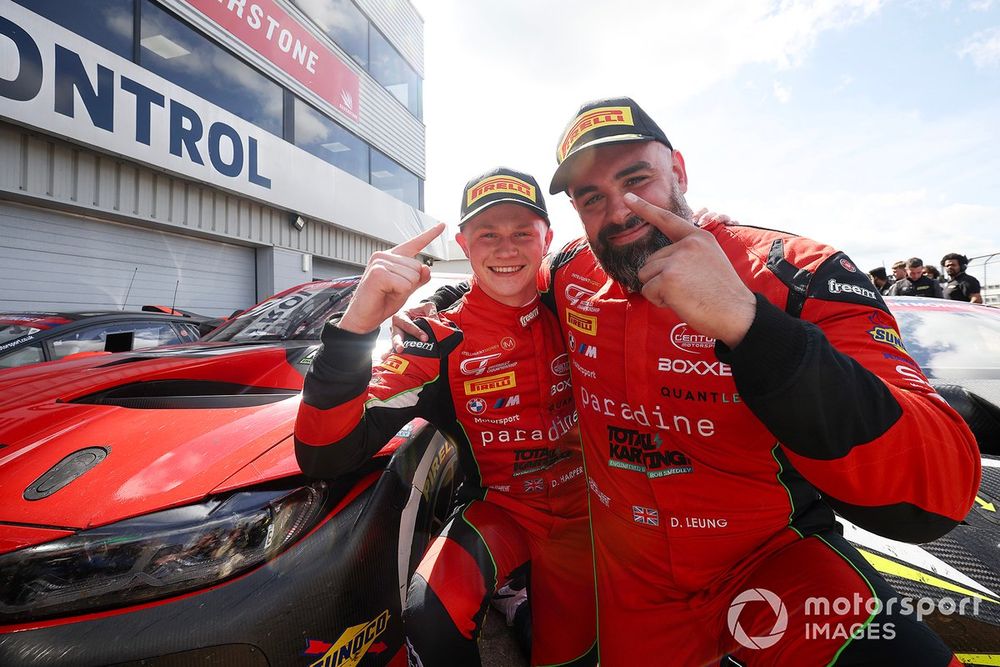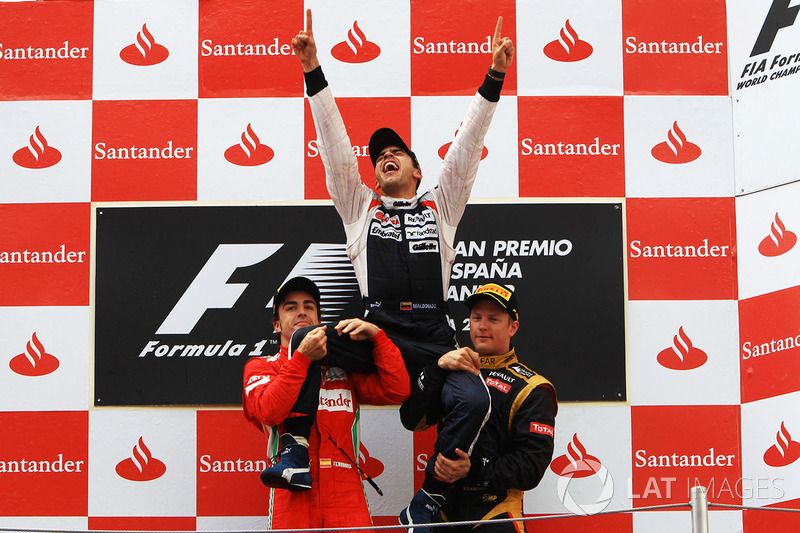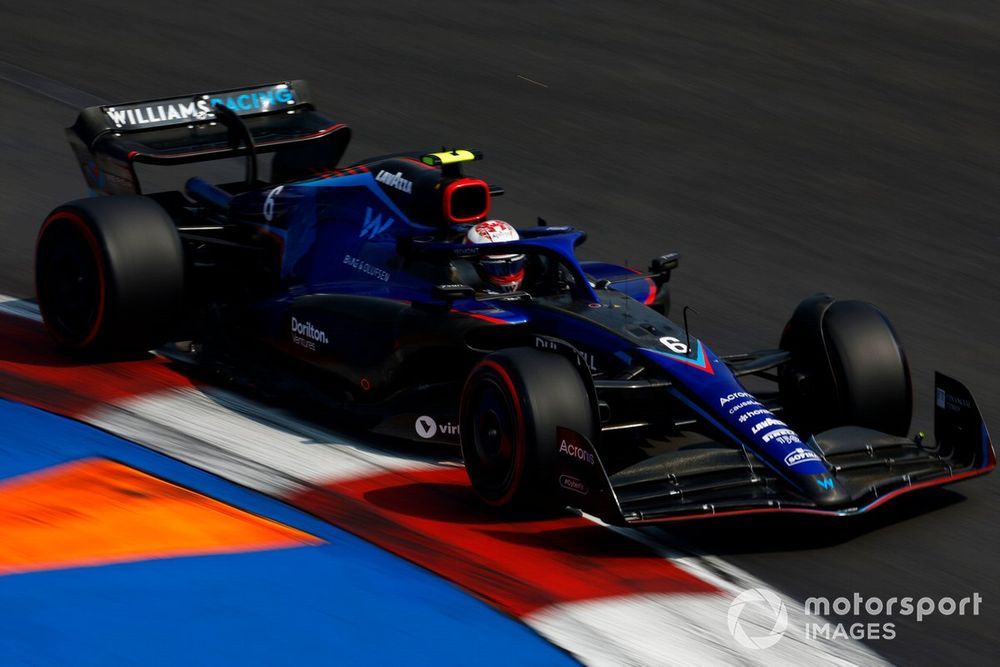Motorsport is one of the most expensive industries in the world as Red Bull paid a staggering $7,445,817 to enter the 2024 F1 season.
But costs are also high at a national level with teams paying up to £29,000 for a space on the British GT grid.
So it is no wonder why some motorsport teams will appoint a pay driver, which is a concept that’s very unique to the industry.
What is a pay driver in F1?
A pay driver is a term in motorsport for somebody who competes for free as they bring money to a team rather than being paid by it. There are various ways in which the driver may have that money whether it is through their own bank account, funding from relatives or via a sponsor.
Niki Lauda, for example, paid for an F2 seat at March in 1971 after withdrawing a bank loan. Lawrence Stroll paid Williams to give his son Lance an F1 seat for the 2017 season, while five years later Zhou Guanyu made his debut after sponsors in his native China helped him secure a spot at Alfa Romeo.
It costs a lot of money for a team to enter F1 with the lowest entry fee for the 2024 season being Haas’ at $736,737, so some constructors have previously relied on a pay driver to survive.
|
Points in 2023 |
Base entry fee ($) |
Fee per point ($) |
Total entry fee ($) |
|
|
Red Bull |
7,445,817 |
|||
|
Mercedes |
3,347,012 |
|||
|
3,327,287 |
||||
|
2,643,487 |
||||
|
Aston Martin |
2,498,837 |
|||
|
1,446,837 |
||||
|
Williams |
||||
That was the case for Forti Corse, who entered bankruptcy during 1996 after losing its pay driver Pedro Diniz at the end of the previous year. Forti failed to score any points during its season on the grid so pay drivers tend to go to backmarkers who are short of funding.

Pedro Diniz, Forti Corse
Photo by: Motorsport Images
In the 21st century, Williams has often hired a pay driver as it was drastically short of money before its ownership change in 2020. In 2018, the team partnered Stroll with another inexperienced driver in Sergey Sirotkin who brought much sponsorship to Williams before Robert Kubica did the same in 2019.
As a result, the pay driver tag is very controversial because many reach F1 despite their skillset not deserving it to the belief of some fans.
Nikita Mazepin was an example of that as he joined Haas for the 2021 season, while his father’s chemical company Uralkali became the team’s title sponsor. Mazepin’s promotion to F1 came after finishing just fifth in F2 and results during his rookie campaign did not help the unwanted tag either, as he was slower than team-mate Mick Schumacher in every qualifying session during the season. But Mazepin only lasted a year in F1, as Haas dropped him just two weeks before the 2022 campaign in response to his native country Russia invading Ukraine.
Not all pay drivers have limited talent though – Jordan was paid £150,000 to give Michael Schumacher his debut – and sometimes the backing from one can help a team to be competitive.
That is because, how can a team build a competitive car if it does not have the necessary funds to do so? It sometimes comes down to the question of what’s more important, a talented driver or a competitive car?
The concept is not exclusive to F1 either. In sportscar racing, the term ‘gentleman driver’ is often used for somebody who claims a race seat through personal backing, while it can also be for a person who purchases a car before partnering with a team to form a privateer entry.
Gentleman drivers are more widely accepted in sportscar racing though, because in many series from the World Endurance Championship to British GT teams typically consist of a professional and an amateur driver.

#91 Century Motorsport BMW M4 GT3: Darren Leung, Dan Harper
Photo by: JEP / Motorsport Images
The future of F1 pay drivers
The F1 pay driver is now less common for two reasons: the rollout of the FIA superlicence and the commercial boom that the series has recently had.
Under the superlicence, a driver must accrue 40 points before reaching F1. Points are awarded based on a driver’s finishing position in other categories, so not just anybody with money can reach F1 because they must now be of a certain standard to get there.
Then there is F1’s popularity increase from the early 2020s, which has resulted in the value of all 10 teams rising. As of 2024, Ferrari is the most valuable team at $3.9billion yet even William, who is the least valuable, is still worth $725million.
Guenther Steiner, former team principal for Haas, echoed those thoughts saying: “In the old days, you had teams which were financially not stable. Now we’ve got 10 very solid teams here so nobody needs to rely on a pay driver right now because Formula 1 is in such a good spot.”
Pay drivers in F1 history
While drivers like Stroll, Lauda, Schumacher and Mazepin have all received a race seat through financial backing, they are not the only so-called pay drivers in history – here are some other examples.
Vitaly Petrov
-
Teams: Renault, Caterham
-
Grand prix starts: 57 (2010 Bahrain Grand Prix – 2012 Brazilian Grand Prix)
-
Wins: 0
-
Podiums: 1
-
Championships: 0
Vitaly Petrov made his F1 debut with Renault at the 2010 Bahrain Grand Prix after a promising 2009 season where he finished second in the GP2 championship. Despite that, his promotion to F1 sparked much controversy because he landed the seat after securing financial backing from his father and the Russian government, who helped him become the first-ever F1 driver from Russia.

Vitaly Petrov (RUS) Renault R30 leads Fernando Alonso (ESP) Ferrari F10 and Mark Webber (AUS) Red Bull Racing RB6. Formula One World Championship, Rd 19, Abu Dhabi Grand Prix, Race, Yas Marina Circuit, Abu Dhabi, UAE, Sunday 14 November 2010.
Photo by: Daniel Kalisz
Petrov’s support from the Russian government was strong and ahead of the 2011 season then prime minister Vladimir Putin pleaded for more backing towards the driver. He started that campaign with a podium at the season-opening Australian GP, but it ended in Renault not retaining Petrov for 2012 despite him finishing a career-best of 10th in the 2011 standings.
That wasn’t the end of his F1 career though, as Petrov moved to Caterham for the 2012 season but that partnership only lasted a year after failing to score a point. After F1, Petrov competed in the 2014 DTM season before moving to WEC from 2016 to 2019 where he claimed two podiums at the Le Mans 24 Hours.
Pastor Maldonado
-
Teams: Williams, Lotus
-
Grand prix starts: 95 (2011 Australian Grand Prix – 2015 Abu Dhabi Grand Prix)
-
Wins: 1
-
Podiums: 1
-
Championships: 0
Pastor Maldonado became the first Venezuelan F1 driver for 27 years – Johnny Cecotto drove the 1984 season – when he made his debut for Williams at the 2011 Australian GP. He was given the drive after winning the 2010 GP2 title, while offering Williams £30million a year through oil company PDVSA – a deal that was personally approved by then Venezuelan president Hugo Chavez.
Maldonado subsequently became a controversial figure during his F1 career, as he was involved in a series of crashes including 11 in 2015 although not all were his fault.
Despite consistently running outside of the points, Maldonado did have his shock day in the sun by winning the 2012 Spanish GP. He achieved it by starting on pole as original pole sitter Lewis Hamilton was demoted to a back-row start because McLaren failed to supply enough fuel for analysis post-qualifying.
Maldonado then lost the lead to Fernando Alonso at the start but regained it by undercutting the Ferrari driver in the first pitstop window. Maldonado had to make another overtake for the lead when Kimi Raikkonen ran a longer penultimate stint, before holding off Alonso’s late charge to give Williams its first victory for eight years and also its last as of 2024.

Podium: race winner Pastor Maldonado, Williams, second place Fernando Alonso, Ferrari, and third place Kimi Raikkonen, Lotus F1
Photo by: Sutton Images
He left Williams for Lotus in 2014 but that partnership only lasted two years, because funding from Maldonado’s sponsor ran dry at the end of 2015 causing him to lose his F1 seat. Maldonado became a Pirelli test driver in 2016 and 2017 before competing in the 2018-19 WEC campaign where he finished third in the LMP2 class.
Rio Haryanto
Rio Haryanto became the first Indonesian to ever compete in F1 when he made his debut for Manor at the 2016 Australian GP. He landed the seat after finishing fourth in the 2015 GP2 championship but, most importantly, had funding from oil company Pertamina for the first 11 grands prix.
Manor then allowed Haryanto to compete in the 12th grand prix, the final one before the summer break, before dropping him mid-season as he needed an extra €7million to complete the campaign.
Esteban Ocon duly replaced Haryanto, who became Manor’s test driver before moving to GT World Challenge Asia and the Asian Le Mans Series after a disappointing F1 career where he failed to score a point.
Nicholas Latifi
Nicholas Latifi became yet another pay driver to have competed for Williams when he was promoted from his test driver role for the 2020 season. Latifi argued that finishing second in the 2019 F2 standings meant he deserved the opportunity, but fans still labelled him as a pay driver because the Canadian came with vast sponsorship including his father’s company Sofina Foods.
It also did not help Latifi that he struggled from the off, as he finished his rookie season with zero points while failing to beat team-mate George Russell in qualifying. Latifi’s sophomore year was better as he finished inside the points twice, but was in the headlines for the wrong reason at the 2021 Abu Dhabi GP when his crash caused a late safety car in the controversial title decider between Hamilton and Max Verstappen.

Nicholas Latifi, Williams FW44
Photo by: Zak Mauger / Motorsport Images
Latifi then entered a crucial final year of his contract in 2022, where he had a new team-mate in Alex Albon as Russell moved to Mercedes. But, Latifi was again consistently beaten by a team-mate and just one points finish that season led to Williams not renewing his contract.
That was also Latifi’s final year in motorsport as he retired following the 2022 season to pursue a Masters of Business Administration at the London Business School. a
